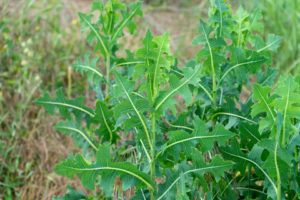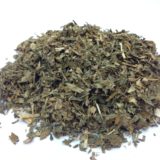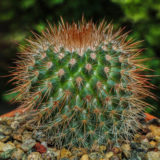Table of Contents
What Legal Plants Are Like Weed?

Legal Plants That Can Be Smoked Like Weed
Marijuana may be one of the most popular plants for recreational smoking on the face of the planet. It does not, however, have a monopoly on recreational smoking. There are several natural alternatives which can be enjoyed as well. These alternatives are also legal in most countries and territories around the world, including the United States, the United Kingdom, Canada, and Australia. While some of the plants may have only been used by shaman, many of them have been smoked for recreation and celebration as well. In fact, most of these plants have been used by various cultures for hundreds or thousands of years!
#1 Blue Lotus (Nymphaea caerulea)

Blue Lotus is native to Egypt and grows throughout the Nile river. It’s a beautiful plant that begins budding at the bottom of the estuary or body of water. It then floats magically to the surface and reveals a powerfully aromatic, gorgeous flower. There are many similar species of lotus which are frequently mistaken for authentic Blue Lotus Flower (Nymphaea caerulea). Ancient Egyptian cultures recognized the plant for its powerful, sacred properties, distributing it frequently for ceremonial events, health, and recreation.1 Only authentic Blue Lotus, cultivated in the right conditions, and harvested fresh can possess the expected psychoactive properties. A good Blue Lotus harvest will contain high contents of the powerful psychoactive alkaloids Nuciferine and Aporphine. Jolly Lotus is currently the best strain of Blue Lotus.
#2 Damiana (Turnera diffusa)
Damiana is another acceptable alternative to marijuana. The plant has a strong, pleasurable aroma that most people find highly attractive. It is native in Mexico and many parts of Central and South America.2 It is common to find Damiana used in proprietary herbal smoking blends. Damiana is a fluffier herb and makes something like packing a cigarette pretty easy. Damiana is also commonly used as a substitute for smoking tobacco (perhaps even more frequently than as an alternative for weed). Many cultures use Damiana as a filler alongside weed itself, creating spliffs. The Turnera genus is very well known to possess aphrodisiac properties as well.3
#3 Wild Lettuce (Lactuca virosa)

Wild Lettuce has been most widely revered for its ability to enhance, induce, and encourage lucid dreaming. It can give users more vivid dreams which are far easier to remember. Shaman traditionally used Wild Lettuce as a way to connect to the dream world, and even for premonition. Many cultures, especially throughout Europe have used the herb as a substitute for weed. Wild Lettuce is also known to many as “Wild Opium” (although much more like weed than opium, and less potent than Blue Lotus or Damiana). Wild Lettuce is indigenous to Great Britain and much of Coastal Europe. It was used throughout the 19th century by medical professionals as a substitute for opium.4
#4 Siberian Motherwort (Leonurus sibiricus)
Siberian Motherwort goes by a few other names, most notably honeyweed, marihuanilla, and even “little marijuana.” It provides some relaxing properties and a gentle sedation. It is indigenous throughout many regions in Asia, though it has been naturalized worldwide in modern times. Still, it can be hard to find a good source of fresh Siberian Motherwort which provides potent enough effects to feel. It is a legal in nearly all of the world and contains eight alkaloids known to be isolated from various parts of the plant.5
#5 Lemongrass (Cymbopogon densiflorus)
Lemongrass may be a rather weak substitute for marijuana, but it is at least there are little to no negative side effects. Admittedly, there is a lack of significant research into the plant. It is definitely known, however, that Lemongrass has been used throughout central and western Africa as a dream and vision enhancer. Priests and shaman found it relaxing and helpful for creating lucid dreams. They also used it for divination and prophecy. It has been used by physicians in some cultures for stress. Some priests have used it to dispel evil spirits and in rituals similar to exorcisms.6
#6 Zacatechichi (Calea zacatechichi)

Frequently used for lucid dreaming, Zacatechichi is native throughout many parts of the Americas. It has a rich history throughout many tribal cultures, including the Ancient Mayas and Ancient Aztecs. Typically, it would be smoked or brewed into a tea by shaman and priests. These spiritualists found the properties of the plant to be a gateway into the dream world. This plant is also known literally as the Aztec Dream Herb. In terms of recreation, traditional and modern cultures alike have turned to the herb as a weed substitute. Although Zacatechichi is a legal herb, there have been some recent concerns over the herb’s potential to create undesirable nephrotoxicity at the cellular and organellar levels.7 Although these concerns are merely speculative, the potential of these concerns have earned this plant a spot on the bottom of the list.
#7 Ink Berry (Cestrum laevigatum)
Ink Berry is popular throughout shamanic rituals in Brazil and much of South America. The shaman use it to induce a trance and for divination. It is also frequently used as a substitute for marijuana in some regions, though it is probably the farthest plant on the list from actual marijuana. While the plant is legal in many countries, including the United States, it is extremely toxic and is thus at the bottom of the list.8
#8 Lion’s Tail (Leonotis leonurus)
Lion’s Tail goes by many names, such as Wild Dagga, Dacha, and Dachab. It has been used as a cannabis substitute throughout South African countries, where it is indigenous. It was so commonly used as a marijuana substitute, it also earned the nick name “Wild Hemp.” It is a little hard to find Lion’s Tail today, and is less popular due to its potential to create hallucinations. Some have compared the effects to smoking Datura, which is not truly a reasonable alternative to weed at all. These reasons place Lion’s Tail at the bottom of the list.
Final Words From The Shaman
Obviously there are many plants which have been traditionally smoked for psychoactive effects, or as a natural substitute for weed. The most popular and closest plant to the real deal, however, remains Blue Lotus Flower. Jolly Lotus has remained the strongest strain of Blue Lotus available for a few years, and comes in a resealable container to keep the herb fresh. Damiana makes a good substitute as well and comes with a distinguishable fragrance. Ultimately, the world of marijuana substitutes is seemingly limitless, however, some herbs clearly make for better alternatives than others.
References
1Paudel, K. R., & Panth, N. (2015). Phytochemical Profile and Biological Activity of Nelumbo nucifera. Evidence-based complementary and alternative medicine : eCAM, 2015, 789124. doi:10.1155/2015/789124
2Willer, J., Johrer, K., Greil, R., Zidorn, C., and Cicek, S.. (Mar 2019). Cytotoxic Properties of Damiana (Turnera diffusa) Extracts and Constituents and A Validated Quantitative UHPLC-DAD Assay. Molecules. MDPI. Retrieved from: https://www.ncbi.nlm.nih.gov/pmc/articles/PMC6429218/
3Kumar, S., Madaan, R., & Sharma, A. (2008). Pharmacological evaluation of Bioactive Principle of Turnera aphrodisiaca. Indian journal of pharmaceutical sciences, 70(6), 740–744. doi:10.4103/0250-474X.49095
4“BSBI List 2007”. Botanical Society of Britain and Ireland. Archived from the original (xls) on 2014-10-23. Retrieved 2014-10-17
5“The Leonurine and its preparation”. (May 15, 2008). An Hui New Star Pharmaceutical Development Co. 2008.
6Voogelbreinder, Snu, Garden of Eden: The Shamanic Use of Psychoactive Flora and Fauna, and the Study of Consciousness. Snu Voogelbreinder, 2009.
7Mossoba, M. E., Flynn, T. J., Vohra, S., Wiesenfeld, P., & Sprando, R. L. (2016). Evaluation of “Dream Herb,” Calea zacatechichi, for Nephrotoxicity Using Human Kidney Proximal Tubule Cells. Journal of toxicology, 2016, 9794570. doi:10.1155/2016/9794570
8Rodrigues, Eliana; Carlini, E.A. (2006). “Plants with possible psychoactive effects used by the Krahô Indians, Brazil” (PDF). Revista Brasileira de Psiquiatria. 28 (4): 277–282. doi:10.1590/s1516-44462006000400006
About the Author
My name is Nathan, but I also go by the name “Botanical Shaman.” I am a herbal/natural medicine and botany enthusiast. I have interests in how all cultures choose to use medicines, supplements, botanicals, and extracts. This includes ancient, extinct cultures, as well as those still in existence today. I am interested in shaman activity involving plants, whether psychoactive or medicinal in application. I am interested in how both first and third worlds use plants, regardless of whether the use is religious in nature or not.
Please check out my Full Author Bio for more information about me and my credentials.




